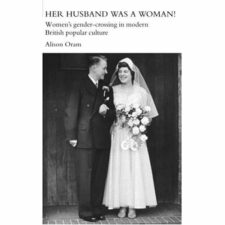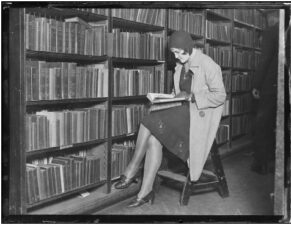Margaret Bondfield (1873-1963) was the first Labour woman to become a cabinet Minister and the first UK cabinet Minister. The year was 1929, some six years after she had been elected to Parliament. It was not the first time Margaret Bondfield was to be a ‘first’. In the year she took her place in Parliament, she became the first woman to chair the Trades Union Congress (TUC), a consequence of her trade union activism and her commitment to trade unionism.
Yet this – commitment and activism – was not all that promoted Margaret Bondfield into posts where no woman had sat or stood before. It took tremendous will, a belief in herself and in the ideas and ideals she espoused, the courage to keep going when the going was tough – as it so often must have been – and the will to continue to affirm that politics, trade unionism and, indeed, engagement with the world of rights, power, influence and authority was right where women should be.
Not quite a century has passed since Margaret Bondfield made the great stride for women into the British Labour Party cabinet room. In 2029 celebrations of the feat will be significant, with Labour women affirming the central role played by this dedicated woman and her importance in advancing women’s rights and the rights of women to perform in the public arena. Yet will the revelry take place in circumstances where women share an equal number of places in cabinet, or in the Parliament? Although Labour is doing relatively well, with a woman as Deputy Leader (Harriet Harman) and, of some twenty-seven places, a dozen women serving in the shadow cabinet, will the numbers remain roughly equal from now on, and will there be another woman Prime Minister? Will there be 300+ women in Parliament, making up the numbers on both sides of the chamber?
To bring about the radical change needed to propel women into elections and safe or winnable seats and, hence, the possibility of women being there in numbers anyway akin to those of men, the Labour Party has adopted the running of ‘Women’s Lists’ for candidate selection in stipulated seats. In the upcoming round, Peterborough, Norwich, Carlisle, Redcar, Bristol West and Dover are committed to all-women lists, whilst Crewe and Nantwich, Cambridge, Chatham and Aylesford, North Windon and Bedford are running ‘open’ lists. All-women lists do not always ‘happen’ where they are scheduled to occur. Some grumbling or rumbling is heard occasionally within and without the Labour Party. Nonetheless, the principle is accepted ‘in principle’ that affirmative steps must be taken to ensure that women may be represented in Parliament in greater numbers and that the goal of equal representation may be met. Are there precedents?
When in the early 1940s Robert Menzies determined to create the Liberal Party of Australia by combining the United Australia Party (UAP) with smaller conservative-leaning groups, he faced a determined group of women when he sought support of the conservative women. They had terms and conditions, non-negotiable if their numbers were to strengthen Menzies’ proposed new political force. Their support was contingent upon Menzies (and his supporters) agreeing to affirmative action for women in the Party: places in the administrative wing and on the executive were to be ‘reserved’ for women, so that women would have a voice in Party policy and organisation. The women won their point, and Menzies secured their votes.
Years later, however, when the Australian Labor Party (ALP) was brought to acknowledge the need for affirmative action, setting the goal in the first instance as 30 per cent of women preselected for parliamentary seats at state and federal elections, Liberal Party women scoffed at the idea. Bronwyn Bishop, a Liberal MP who had striven for years to be preselected for a winnable seat – eventually succeeding – was particularly scathing. Her contention was that affirmative action was degrading for and to women: that women should succeed on ‘merit’ and that positive steps to advance women would see inferior candidates who would always be regarded in this light through not ‘making it on their own’. The media was also divided.
At that time, a large slew of women were elected in what was seen as a ‘landslide’, when the Keating Government was defeated and John Howard came to power as Australian Prime Minister. On that basis, many contended that ‘merit’ had parachuted those women into Parliament and no other action was required. Yet the numbers did not persist, with subsequent elections resulting in some new members holding on to their seats, whilst others saw their seats returning to the left side of politics.
Meanwhile, women recognised the importance of funding and resources in running political campaigns: seats could not be won by talent alone. Early Money is Like Yeast – Emily’s List – was born in the United States to provide women candidates with basic funding, or at least ‘seeding grants’ to get their campaigns off the ground. Joan Kirner, the first woman Deputy Premier, then first woman Premier, of Victoria, was the leading force in bringing Emily’s List to Australia. Granted an AC (Companion of Australia in the Order of Australia awards – the ‘Australian CBE/OBEs’) in the June 2012 Honours List, Joan Kirner was quoted as saying she was looking eagerly for the next Victorian woman Premier: she did not want to remain the ‘first and only’. Emily’s List continues to support women candidates and, hoped Joan Kirner, it would ensure that women Premiers took their place in a long list begun with her ascension.
Is there any counterpart in the United Kingdom? The Conservative-Liberal-Democrat Coalition Government has its women members and women ministers. Yet the numbers are not equal: of twenty-three in the ministry, five are women: Therese May, the most senior, as Home Secretary, Baroness Warsi as Conservative Party Chair (presently standing down), Caroline Spellman, Environmental Secretary, Justine Greening, Transport Secretary, and Cheryl Gillan, Welsh Secretary. As for Members, the House of Commons comprises 650 MPs. Of these, 505 are men, with 145 women.
Some years ago, Lesley Abdulla established the 300 Club, organised to advance women’s parliamentary numbers. That goal lies distant, and does not appear to be on target for 2029. Recognising this, Labour Women’s Network (LWN) launched the Margaret Bondfield Club, with aims paralleling those of Emily’s List as well as, more broadly, being ‘a new way of doing more … in making sure women play a full part in the life of the Labour Party and its future’.
Power lies in the political arena, just as it does in law, business, ‘The City’ and all our institutions. Ultimately, however, these institutions will not be ‘ours’ in the sense of women and men having equal involvement, exercising equal authority, influence, rights and power – until women and men participate equally at all levels. History shows that capabilities, talent and ability are not enough. It remains to be seen what effect affirmative action may have in the longterm, and whether initiatives such as the Margaret Bondfield Club achieve their founders’ hopes.
Margaret Bondfield did her bit last century. LWN’s stated desire is that the Margaret Bondfield Club will do its bit in making room for a multiplicity of giant strides by women, for women, this century.
Dr Jocelynne A. Scutt is a filmmaker and historian, whose films include ‘The Incredible Woman’ and ‘A Greenshell Necklace’ (with Karen Buczynski-Lee) and the DVD Installation ‘Covered’ – www.theburqahdebates.com/ Her books include The Sexual Gerrymander – Women and the Economics of Power. She is a member of LWN.

